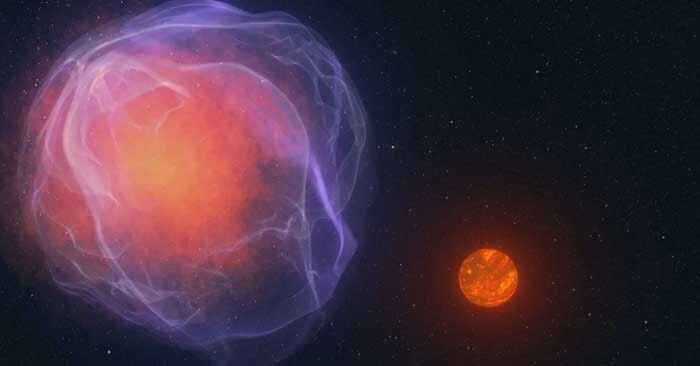
Posted by - News Staff![]() \
\
August 23, 2024 \
Filed in - Technology \
CWISE J124909.08+362116.0 NASA Brown Dwarf 1 Million MPH \
2.4K views \ 0 reviews
DLNews NASA:
In the vast cosmic dance of our Milky Way, most stars and celestial objects move along their orbits with quiet regularity. But now and then, something extraordinary breaks the mold. Enter CWISE J124909.08+362116.0, a hypervelocity object zipping through space at a mind-boggling 1 million miles per hour—fast enough to eventually escape the Milky Way entirely and head into the great unknown of intergalactic space.
This discovery is even more remarkable because it wasn’t professional astronomers who first spotted this cosmic sprinter. Instead, it was a group of dedicated citizen scientists participating in NASA’s Backyard Worlds: Planet 9 project. Using data from NASA’s Wide-field Infrared Explorer (WISE) mission, these space enthusiasts have helped discover, reshaping our understanding of what’s out there.
The Cosmic Hunt Begins

A few years ago, longtime citizen scientists Martin Kabatnik from Germany, Thomas P. Bickle, and Dan Caselden were scanning WISE images when something unusual caught their eyes. A faint, fast-moving object was making its way across the screen. At first, Kabatnik couldn’t believe what he was seeing. “I can't describe the level of excitement,” he recalls. “When I first saw how fast it was moving, I was convinced it must have been reported already.”
But it hadn’t. They had found CWISE J1249, a mysterious object with the mass of a small star—or possibly less—racing out of the galaxy. Its speed and low mass made it difficult to classify, leading to speculation that it could be a low-mass star or a brown dwarf, an object between a gas giant planet and a star.
Not Your Ordinary Brown Dwarf
Brown dwarfs, often described as “failed stars,” are common in the universe. But CWISE J1249 is anything but ordinary. It’s the first such object on a one-way trip out of the Milky Way. Even more intriguing is its composition. Observations from the W. M. Keck Observatory in Hawaii revealed that CWISE J1249 has much less iron and other metals than typical stars or brown dwarfs, suggesting that it’s ancient—possibly one of the earliest stars in our galaxy.
A Mysterious Past
So, what could have given CWISE J1249 such a dramatic kick into hyperdrive? One theory is that it originally belonged to a binary star system, where its partner, a white dwarf, exploded as a supernova, sending CWISE J1249 hurtling through space. Another possibility is that it was ejected from a dense star cluster after a close encounter with a pair of black holes. “When a star encounters a black hole binary, the complex dynamics of this three-body interaction can toss that star right out of the globular cluster,” explains Kyle Kremer, an incoming assistant professor at UC San Diego.
Further studies will delve into CWISE J1249’s elemental composition to help unravel its mysterious origins. But one thing is clear: this discovery is a testament to the power of collaboration between citizen scientists and professionals.
Join the Hunt for the Next Cosmic Wonder
Does this discovery inspire you? You, too, can join the hunt for extraordinary objects in our universe. The Backyard Worlds: Planet 9 project is open to anyone, anywhere in the world. Whether an experienced astronomer or a curious novice, you can contribute to the subsequent significant discovery.
And if you’re hungry for more stories like this, check out NASA’s Curious Universe podcast, where you can hear personal tales from citizen scientists making their mark on the final frontier.
In the vastness of space, who knows what you might find?
The caption to artwork:
This artist's concept shows a hypothetical white dwarf, left, that has exploded as a supernova. The object at right is CWISE J1249, a star or brown dwarf ejected from this system due to the explosion. This scenario is one explanation for where CWISE J1249 came from.
W.M. Keck Observatory/Adam Makarenko

At Desert Local News, connections are everything. We're not just another social networking platform—we're a lively hub where people from all walks of life come together to share stories, spark ideas, and grow together. Here, creativity flourishes, communities grow stronger, and conversations spark global awareness.
Comments